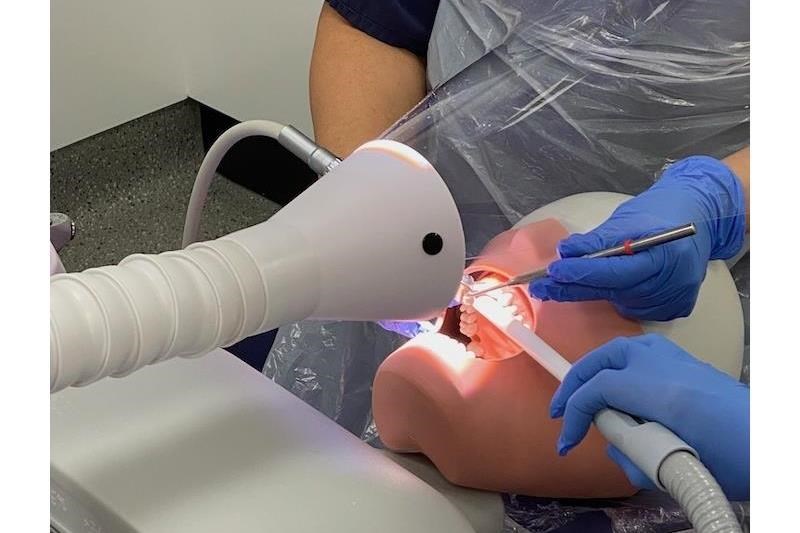Study shows local exhaust ventilation controls dental aerosols and droplets
Leading fume and dust extraction company Vodex Ltd.’s Dental Air UVC has been scientifically proven to protect dental professionals and patients during aerosol-generating procedures (AGPs).
Published: 13/12/2021
The study, carried out by researchers at Newcastle University, concurs that the local exhaust ventilation (LEV) solution helps to prevent the transmission of airborne viruses like Covid-19.
During the pandemic, the chief dental officer for England, Sara Hurley, issued updated fallow time guidance based on the number of air changes taking place within a room. This ranged from 60 minutes for rooms with six air changes per hour, to a more practical 20 minutes for rooms with 10-12 air changes.
With fallow times impacting dental businesses across the world, practice owners and managers turned to LEV systems like the Dental Air UVC and praised its efficiency with Queens Park Dental team commenting, “We looked at various solutions and the VODEX Dental Air UVC came out on top.”
Whilst some previous studies have been carried out, Vodex believes this report is the first of its kind – studying both airborne aerosols and settled droplets simultaneously.
Two experiments were conducted on dental mannequins, one in an 825.4-m3 open-plan clinic and the other a 49.3-m3 single surgery, following two procedures using two different pieces of dental equipment:
· A 10-minute crown preparation using an air turbine handpiece in the open-plan clinic
· A 10-minute full-mouth ultrasonic scaling in the single surgery
The Dental Air UVC AGP filtration system used is compliant with HEPA EN1822 standards, at an airflow rate of 5,000 L/min of air.
In both cases, the Dental Air UVC inlet nozzle was positioned uniformly 10cm below the chin of the mannequin and 4cm above its mouth, allowing for fair and even testing procedures.
Each of the tests proved that the Dental Air UVC dramatically reduces the dispersion of aerosols.
The results of the air turbine handpiece showed a 90 per cent aerosol reduction within 0.5m, but even this impressive result was outdone by an incredible 99 per cent during use of the ultrasonic scaler.
The reduction of settled droplets was measured for the handpiece alone, and this too gave a reassuring result. It showed that droplets reduced by 95 per cent when the Dental Air UVC was paired with dental suction, compared to using suction alone.
“We’ve been saying it for years, but now we’re delighted to have comprehensive scientific proof,” says Paul Riddick, Vodex co-founder.
“After this study, you just can’t question the effectiveness of local exhaust ventilation in keeping patients and dental workers safe from airborne contaminates. Whatever kind of dental procedure you’re undertaking, the Dental Air UVC is now proven to do so much more than simple suction in removing aerosols from the air, and preventing potentially harmful droplets from settling on the ground.”
“We’re delighted about the findings of this study,” he continues. “Now we can even more unequivocally say that the Dental Air UVC will help dentists conform to safety standards. If you run a dental surgery, the Dental Air UVC is one of the best ways to keep your business COSHH-compliant, and operating as normal as the ongoing situation with airborne viruses develops.”
Author: N/A













